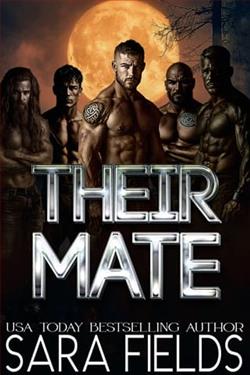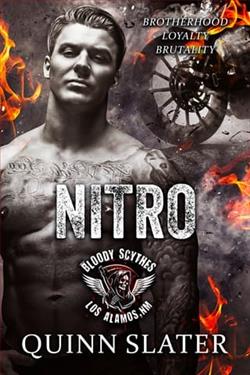Page 3 of The Midnight Lock (Lincoln Rhyme 14)
Being a criminalist, a forensic scientist aiding in criminal investigation, is only partly about the laboratory; the other aspect of the job is performing. The prosecutor needs an expert witness to present findings in an articulate way and to patiently and effectively parry the defense counsel’s assault on your conclusions. On redirect, a good prosecutor can sometimes rehabilitate a witness battered by the defense, but it’s best not to get into hard straits in the first place. Lincoln Rhyme was reclusive by nature, and loved his time in a laboratory above all, but he was not entirely introverted. Who doesn’t enjoy a little grandstanding before the jury, and sparring with the defendant’s attorney?
“You testified on direct that no fingerprints of my client were left at the crime scene where Leon Murphy was murdered, correct?”
“No, I did not.”
Coughlin frowned, looking at a yellow pad that might have contained perceptive notes or might have contained doodles or a recipe for beef brisket. Rhyme happened to be hungry. It was ten a.m. and he’d missed breakfast.
Coughlin glanced at his client. Viktor Antony Buryak, fifty-two. Dark-haired like his mouthpiece but bulkier, with Slavic features and pale skin. He wore a tailored charcoal gray suit and a burgundy vest. Buryak’s face was oddly unthreatening. Rhyme could picture him serving up pancakes at a church basement fundraiser and remembering every parent by name and giving the kids an extra splash of syrup.
“Do you want me to read you back your testimony?” Coughlin, who’d been hovering close to Rhyme, like a shark near chum, lifted a palm.
“No need. I remember it. I stated—under oath, I’ll just reassure you—that of the fingerprints collected at the scene of Leon Murphy’s murder, none could be identified as your client’s.”
“What exactly is the difference?”
“You said I testified that your clientleftno fingerprints at the scene. He might very well have left a million of them. The evidence collection team simply didn’t recover any.”
Coughlin rolled his eyes. “Move to strike.”
Judge Williams told the jury, “You’ll disregard Mr. Rhyme’s response. But try again, Mr. Coughlin.”
Looking put out, Coughlin said, “Mr. Rhyme, no fingerprints of my client werediscoveredat the crime scene where the convicted felon Leon Murphy was shot, correct?”
“I can’t answer because I can’t speak to whether the victim was a convicted felon or not.”
Coughlin sighed.
The judge stirred.
Rhyme said, “I agree with your ‘were discovered’ part of that sentence.”
Coughlin and Buryak shared a look. The client was taking this better than his attorney. The lawyer returned to his table and glanced down.
Rhyme regarded the jury and found more than a few looking his way. They’d be curious about his condition. Some defense attorneys, he’d heard, privately complained about his presence, given that he was a quadriplegic, testifying from a wheelchair—which, they believed, generated sympathy for the prosecution.
But what could he do? Wheelchair bound he was. Criminalist he was.
Rhyme’s eyes circled to the defendant. Buryak was a unique figure in the history of organized crime in the region. He owned a number of businesses in the city, but that wasn’t how he made most of his money. He offered a unique service in the underworld, one that had probably cost more lives than any other organized crime outfit in New York’s exceedingly criminal history.
ThePeople of the State of New York v. Viktor Buryak, however, had nothing to do with that. This was about a single incident, a single crime, a single murder.
Leon Murphy had been shot to death a week or so after a meeting with the manager of a warehouse that Buryak owned. Murphy was a psychotic wannabe gangbanger who fancied himself a descendant of the Westies, the brutal Irish gang that had once ruled Hell’s Kitchen in Manhattan. Murphy had made a sales pitch offering protection to the warehouse manager.
A very bad business idea, selling that particular product to that particular consumer.
Coughlin asked, “Did you find footprints near Leon Murphy’s body? Or near where the bullet casing was found?”
“Near the body, the field was grassy, no footprints could be ascertained. Near the bullet casing, the evidence collection technicians found footprints but because of a recent rain it was impossible to determine the type of shoe.”
“So you can’t testify that my client’s footprints were found at the scene of the crime?”
“Don’t you think that can be inferred from my prior comment?” Rhyme asked acerbically. He’d learned that nobody cares about badgering attorneys. That’s what they’re paid for.
“Mr. Rhyme, does the NYPD forensics unit routinely collect DNA at crime scenes?”
“Yes.”
“And did you discover any of my client’s DNA at the scene where Leon Murphy was killed?”















